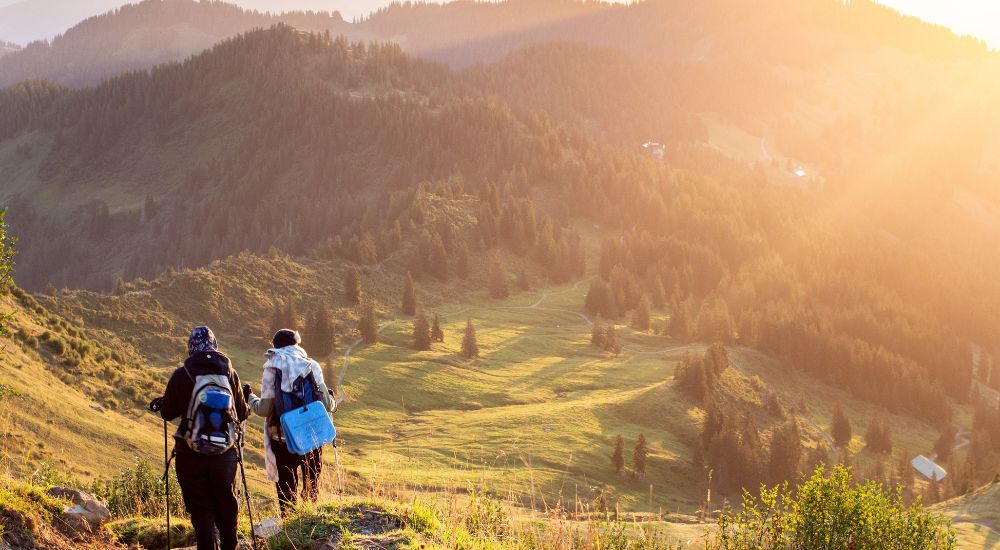Arizona is known for its stunning desert landscapes, dramatic mountain ranges, and diverse ecosystems. One of the best ways to experience all of this natural beauty is by traversing the Arizona National Scenic Trail—an epic, 800-mile route that stretches from the U.S.-Mexico border to the Utah state line. Whether you’re a seasoned thru-hiker or a weekend adventurer, this trail offers a unique journey through the heart of the Grand Canyon State.
What Is the Arizona National Scenic Trail?

The Arizona National Scenic Trail, also known as the AZT, is a long-distance trail that cuts across Arizona vertically from south to north. It begins at Coronado National Memorial near Sierra Vista in southern Arizona and ends at the Arizona-Utah border in the Kaibab Plateau. The trail is divided into 43 segments and takes hikers, bikers, and horseback riders through deserts, canyons, forests, and mountain ranges.
This trail isn’t just a hiking route; it’s a celebration of Arizona’s environmental diversity. From the Sonoran Desert’s cacti to the towering ponderosa pines of northern Arizona, it captures the essence of the American Southwest.
Highlights Along the Trail



Saguaro National Park
Located near Tucson, this segment offers an incredible chance to walk among towering saguaro cacti, a symbol of the American West. In spring, wildflowers bloom, painting the desert in vibrant colors.
The Mogollon Rim
This dramatic escarpment marks the boundary between the Colorado Plateau and the Arizona Transition Zone. You’ll enjoy cooler climates, pine forests, and panoramic views.
The Grand Canyon
The AZT passes right through the Grand Canyon, offering a once-in-a-lifetime hiking experience. Trekkers descend into the canyon and climb out the other side, experiencing the immensity and wonder of one of the world’s greatest natural wonders.
Tip: Permits are required for camping in the Grand Canyon portion of the trail. Visit the Grand Canyon National Park website for details.
Tips for Hiking the AZT

Whether you’re planning a day hike or the full 800-mile adventure, here are some tips to help you prepare:
Plan for Diverse Climates
Arizona’s landscape varies greatly. In the south, expect hot, dry desert conditions, while the northern sections can be cool and forested, with snow in winter and early spring.
Know Your Water Sources
One of the biggest challenges of the trail is water availability. The Arizona Trail Water Report, an essential tool maintained by volunteers, provides up-to-date information on water sources along the route.
Respect the Land and Wildlife
You’ll pass through national forests, state parks, and tribal lands. Always practice Leave No Trace principles and respect local regulations.
Ideal Times to Visit
Spring (March to May) and Fall (September to November) are the most comfortable seasons for hiking the Arizona National Scenic Trail. Summer temperatures in the desert can exceed 100°F, while winter in the north can bring snow and ice.
For a full thru-hike, most adventurers start in the south in March and finish in the north by late May or early June to avoid harsh summer weather.
Trail Activities Beyond Hiking



While thru-hiking is the most well-known activity on the Arizona Trail, it’s also popular for:
- Mountain biking (on bike-legal segments)
- Horseback riding
- Trail running
- Bird watching and photography
The trail is also used by locals and tourists alike for short, scenic hikes that provide a taste of Arizona’s vast wilderness.
Interested in exploring more Arizona nature? Don’t miss our guide to the Painted Desert, another breathtaking landscape just north of the AZT.
Best Trailheads for Day Hikes

Not everyone can dedicate weeks to hiking the AZT, but there are plenty of stunning day-hike options:
- Patagonia to Temporal Gulch: A lush desert riparian corridor.
- Pine to Blue Ridge: A forested section offering cool temperatures.
- Stateline to Winter Road Trailhead: Experience the northern terminus with expansive views.
Travel tip: If you’re visiting the area and need lodging near trailheads, check out our guide to Arizona trail towns and accommodations.
Supporting the Trail and Getting Involved

The Arizona Trail Association (ATA) is the nonprofit behind the trail’s maintenance, advocacy, and educational outreach. You can support the trail in several ways:
- Become a member of the ATA
- Volunteer for trail maintenance events
- Donate to trail preservation efforts
Explore volunteer opportunities and membership at the official Arizona Trail Association site.
Conclusion
The Arizona National Scenic Trail is more than a physical journey; it’s a transformative experience that immerses you in the raw beauty, history, and culture of the American Southwest. Whether you’re hiking a single segment or conquering the entire 800-mile route, this trail is a gateway to Arizona’s wild heart.
So lace up your boots, pack your gear, and hit the trail you’ll walk away with more than just memories.

